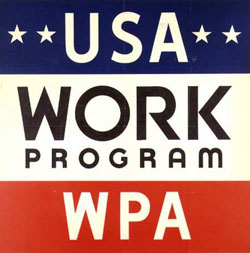
By Susan Feiner
June 10, 2009
FDR realized that, “People who are hungry and out of a job are the stuff of which dictatorships are made.” Why do most economic policies run counter to this basic point?
Faith in markets leads economists to believe that full-employment is impossible, government intervention is destructive, deficits are bad, and planning is futile. That is nonsense.
Remember Galileo? His heresy was challenging the belief that the earth was the center of the universe. It’s as heretical today to enact policies that don’t place markets at the center of the economy. Excommunicating Galileo didn’t change planetary orbits, but misguided fealty to markets does affect our future.
Today, over 14.5 million Americans are jobless and another 9 million are working reduced hours. All 372 metropolitan areas in the U.S. saw unemployment rise in May, and 93 recorded jobless rates of at least 10 percent.
To fight unemployment and reduce unnecessary suffering the Social Security Act of 1935 established a joint Federal-State system of unemployment insurance (UI). Today, state unemployment programs set benefits so low that few households dependent upon UI can make ends meet.
We are the skinflint states.
The stingiest state is Arkansas where the average weekly benefit ($207) contributes only 29 cents of each dollar a family needs to cover the bare minimum for food, rent and utilities, transportation, child care, clothing and household expenses. Arkansas’ average weekly unemployment benefit works out to $1.36 per hour less than the federal minimum wage. The least stingy state is Wyoming where the average weekly benefit ($328.34) delivers 53 cents of each dollar needed to meet basic needs. U.S. workers collect, on average, $269.29 per week in UI. This replaces a mere 40 cents of each dollar needed to cover the basics.
Now is the time to embrace an economics of the people, for the people and by the people. Meaningful jobs at decent wages are as essential to democracy as freedom of speech and freedom of religion.
Consider this simple math: hire 10 million people at $25 thousand per year (about $12 per hour). The cost? $250 billion dollars — a fraction of what we’ve handed the nation’s bankers who neither lend nor spend. In contrast, all $250 billion (less payroll taxes) will be spent immediately, putting a sharp brake on the downward spiral of joblessness.
Ten million people should not be paid $12 an hour to be idle. Rather, the federal government should step in as the employer of last resort. We know this works. It worked in the 1930s and it will work again today.
During the New Deal, direct federal employment created over 10 million jobs, driving unemployment to its lowest level since the Great Crash. Federal employees built schools, hospitals and libraries; brought electricity to millions of rural households; preserved thousands of acres of forest; and produced art that is now a treasured part of our heritage.
Now, as then, there is plenty of work to do and plenty of people who want work.
FDR knew that “Necessitous men are not free men.” We have a choice: America — the land of the free or the home of the broke?
Feiner is the director of women and gender studies and a professor of economics at the University of Southern Maine.


 The Hunger Site
The Hunger Site
No Comments
Comments for Let’s Make a New, New Deal are now closed.